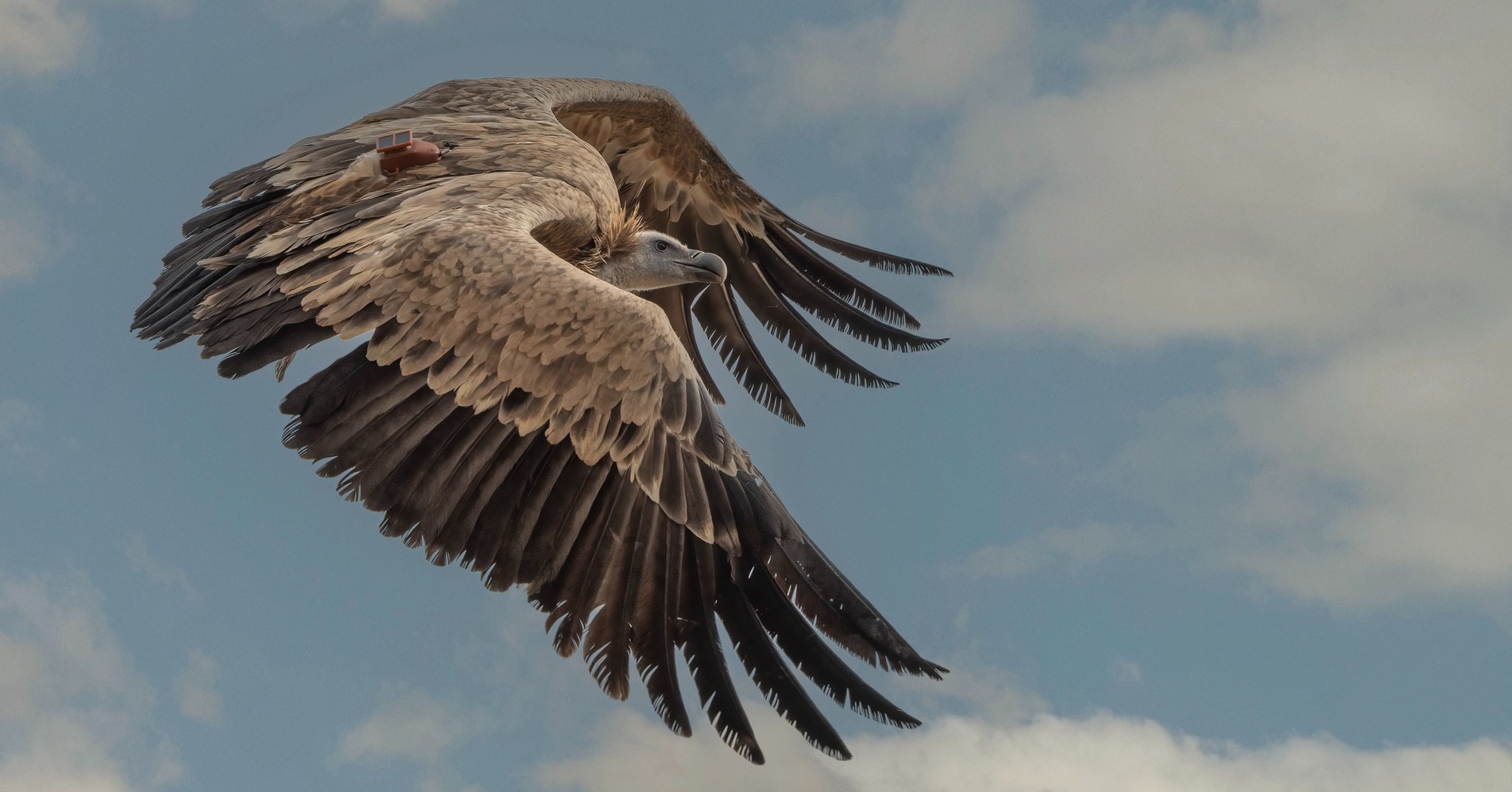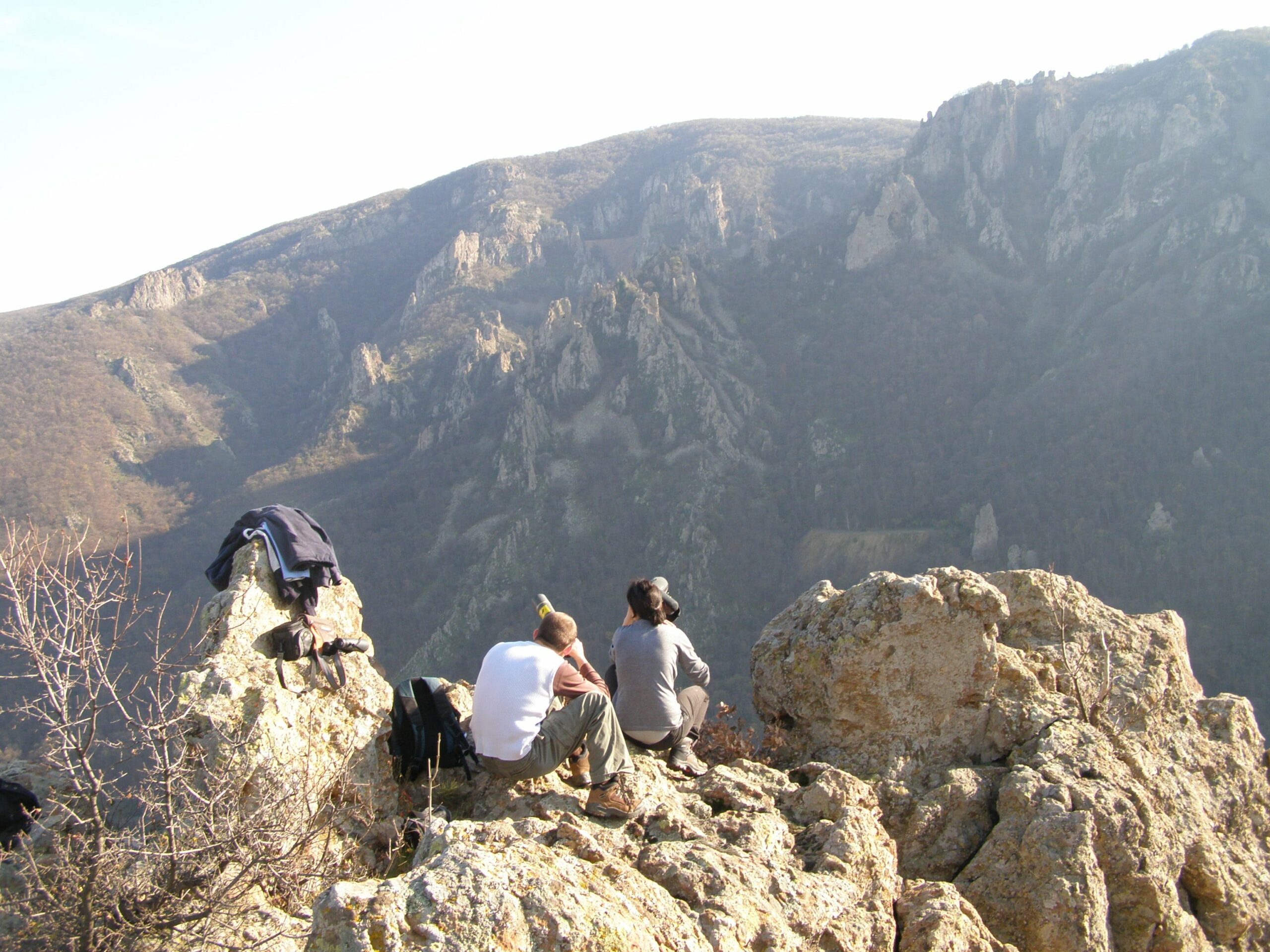Education is one of the pillars of conservation, especially for vultures species which are often misunderstood and overlooked. The LIFE SUPport project developed an educational programme teaching young students about Griffon Vultures and the threats they face. The programme includes interactive and practical lessons, and birdwatching, allowing students to experience both research and monitoring activities.
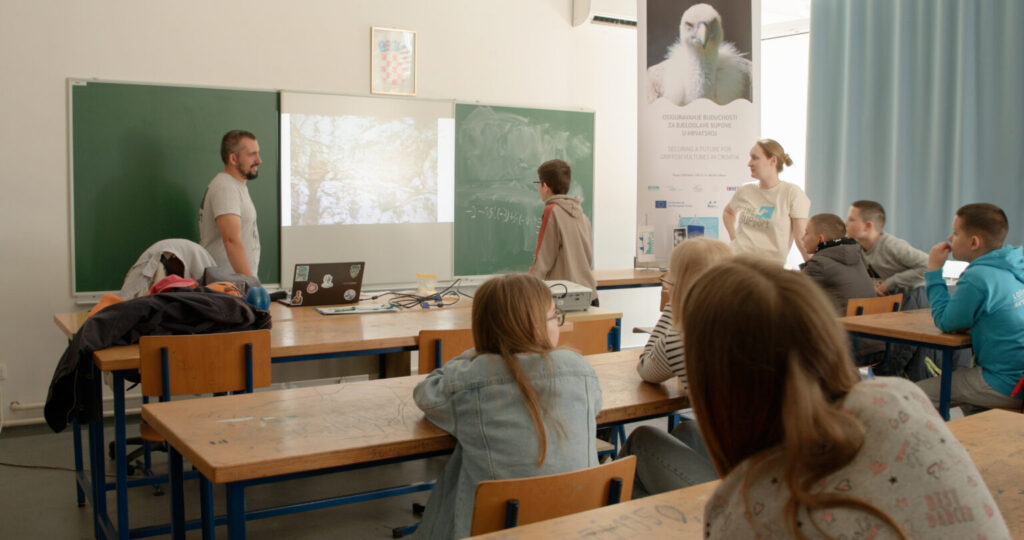
At the end of March, the LIFE SUPport project brought Griffon Vultures (Gyps fulvus) conservation in schools for the second year. The staff of BIOM, leader of the project, held educational workshops in elementary schools in the Kvarner region. In 2024, the project visited five schools and worked with 122 children. This year the programme just started, and it already visited three schools. It aims to educate the younger generations about Griffon Vultures ecology and the threats this species faces in Croatia.
Teaching Croatian students about Griffon Vultures
Education is an incredibly powerful tool to encourage long-term protection of vulnerable species. BIOM, leader of the LIFE SUPport project, knows it very well. In their programme students learn about the biology and behaviour of Griffon Vultures (Gyps fulvus) and the challenges they face. Through interactive presentations and creative activities, students are encouraged to think critically about the role of vultures in the ecosystem and reflect on how human actions can affect wildlife.
Vultures biology and local threats
The programme starts with an introduction about vultures, followed by practical activities. To learn about the biology of Griffon Vultures, the students are asked to connect feathers to different parts of the vulture body. They can closely observe the shape of the feathers and link them to their function.
The students are then asked to measure the mass of a “vulture”, made with a sock filled with feathers, before and after it was submerged in water. In fact, it is unfortunately common for young Griffon Vultures hatched in the Kvarner Islands to fall into the sea during their first flights. First-hand experiencing the effects of this threat, allows students to link together conservation practices and local identity.
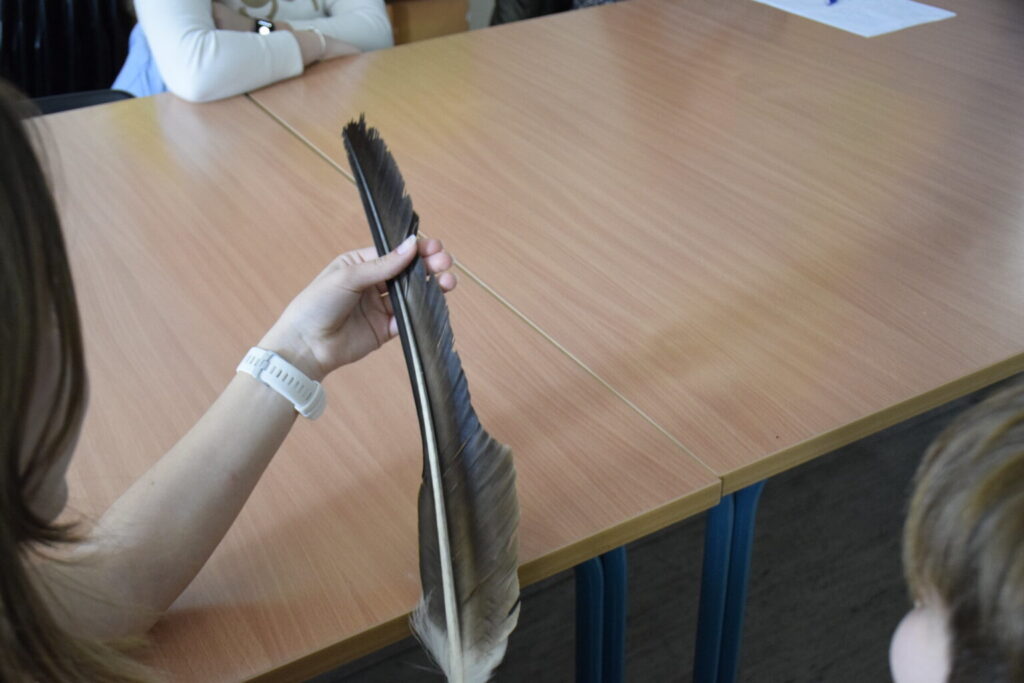
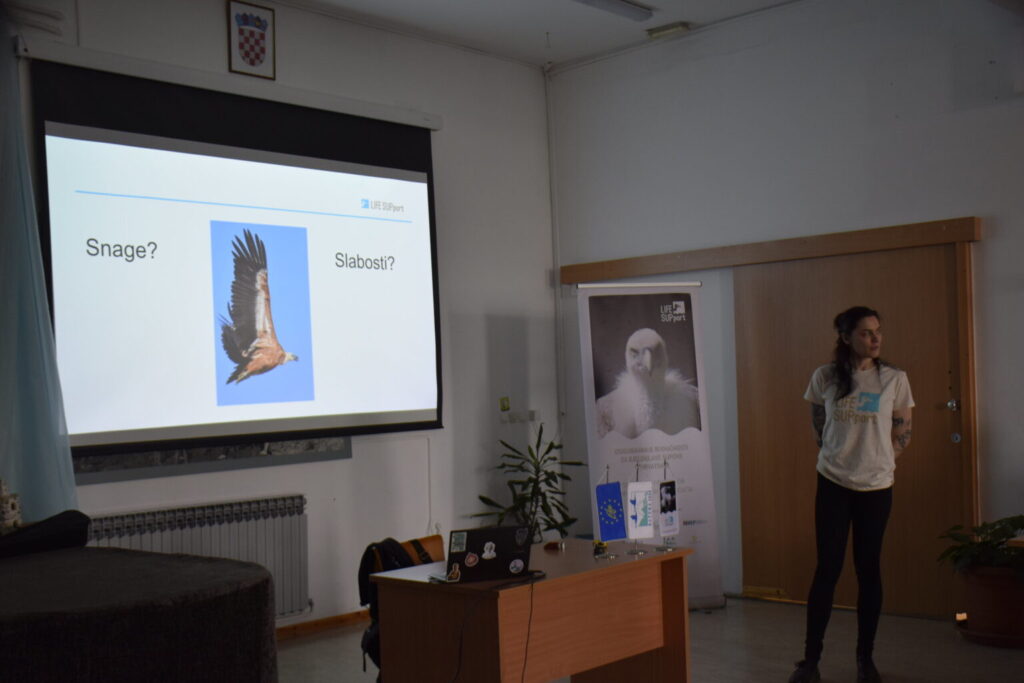
Diving into vultures ecosystemic role and main threats
The next activity focuses on the ecological role of vultures and the threats linked to their feeding habits. BIOM team presents student various bacteria that causes disease in humans and livestock – such as cholera and botulism. Bacteria are represented by drops of food colourings dissolved in vinegar which represents vultures stomach acids. In this way students observe how vultures neutralise potentially deadly diseases just by digesting bacteria growing on carcasses. Afterwards, pieces of graphite are added to the mixture. Graphite represents poison and lead, two silent threats to vultures survival. Students observe that graphite does not dissolve in vinegar, therefore recognizing that vultures cannot digest those compounds and can be intoxicated by them.
In the third activity, students are asked to design “bird friendly” electrical poles. The aim is to create poles on which vultures can stretch their wings without risking electrocution. Finally, the students head to the school garden for a guided birdwatching session.
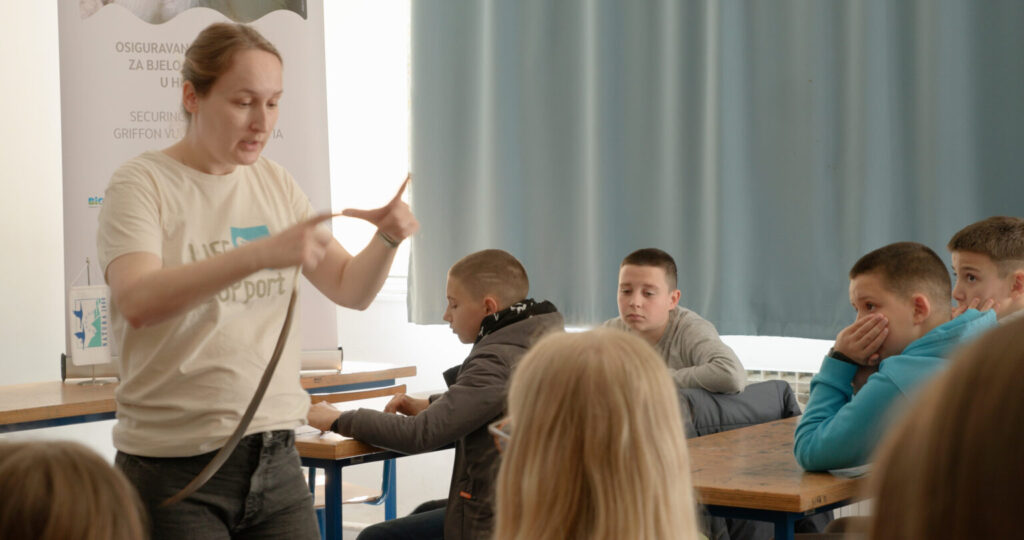
Connecting local communities with their natural heritage
Every classroom visit is an investment in a future where vultures thrive. For children growing up near the cliffs where vultures nest, understanding the birds’ ecological and cultural value is a first step toward coexisting with them. The earlier we start involving communities in conservation, the stronger and more resilient our efforts become. Education helps bridge the gap between conservationists and the public, creating a shared vision for the future.
Initiatives like BIOM’s educational programme remind us that conservation isn’t just about saving species—it’s about shaping values, building knowledge, and empowering people of all ages to act. We hope that these lessons will echo beyond the classroom, carried home by students who proudly share what they’ve learned and inspire others in their communities. After all, the very foundation of conservation is not technology or funding—it’s people who care.
LIFE SUPport
La LIFE SUPport aims to strengthen Croatia’s endangered Griffon Vulture (Gyps fulvus) population. A 5-year project co-financed by the EU’s will create better conditions for the species to thrive and recolonise its historical breeding ground on the Croatian mainland. The project aims to improve breeding and survival conditions, minimise nest disturbance, reduce nestling mortality, tackle the threat of poison, mitigate collision and electrocution risks, and increase food availability.
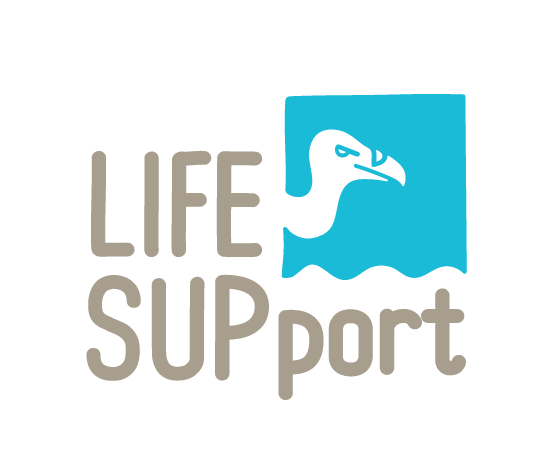
La LIFE SUPport is a 2.1 million project from January 2023 until December 2027. A joint effort led by BIOM with Public Institution Priroda, Otok Krk Agricultural Cooperative, HEP – Operator distribucijskog sustava d.o.o., the energy distribution company, the Vulture Conservation Foundation and the Croatian Nature Protection Directorate (Ministry of Economy) as associate partners.


